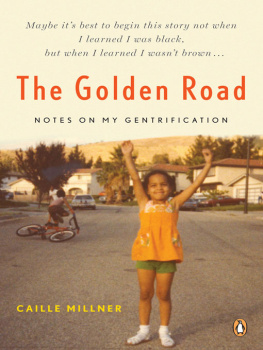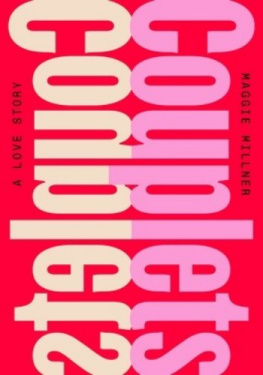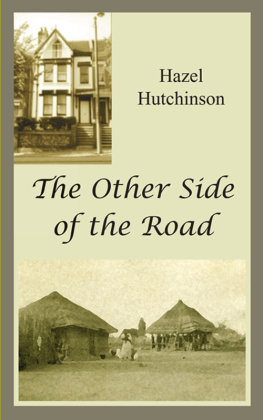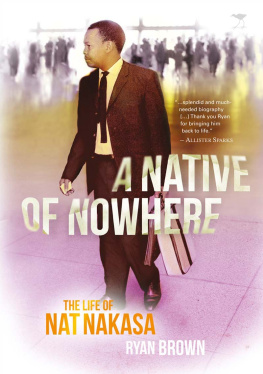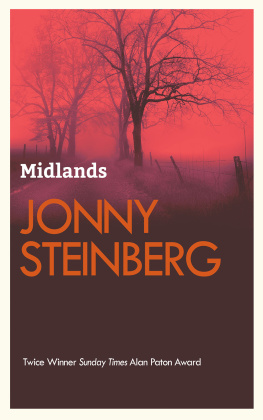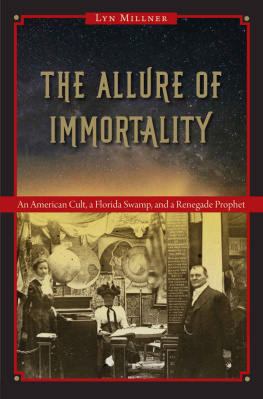THE GOLDEN ROAD
NOTES ON MY GENTRIFICATION
CAILLE MILLNER

PENGUIN BOOKS
Published by the Penguin Group
Penguin Group (USA) Inc., 375 Hudson Street, New York, New York 10014, U.S.A. Penguin Group (Canada), 90 Eglinton Avenue East, Suite 700, Toronto, Ontario, Canada M4P 2Y3 (a division of Pearson Penguin Canada Inc.) Penguin Books Ltd, 80 Strand, London WC2R 0RL, England Penguin Ireland, 25 St Stephens Green, Dublin 2, Ireland (a division of Penguin Books Ltd) Penguin Group (Australia), 250 Camberwell Road, Camberwell, Victoria 3124, Australia (a division of Pearson Australia Group Pty Ltd) Penguin Books India Pvt Ltd, 11 Community Centre, Panchsheel Park, New Delhi 110 017, India Penguin Group (NZ), 67 Apollo Drive, Rosedale, North Shore 0632, New Zealand (a division of Pearson New Zealand Ltd) Penguin Books (South Africa) (Pty) Ltd, 24 Sturdee Avenue, Rosebank, Johannesburg 2196, South Africa
Penguin Books Ltd, Registered Offices:
80 Strand, London WC2R 0RL, England
First published in the United States of America by The Penguin Press, a member of Penguin Group (USA) Inc. 2007
Published in Penguin Books 2008
Copyright Caille Millner, 2007
All rights reserved
THE LIBRARY OF CONGRESS HAS CATALOGED THE HARDCOVER EDITION AS FOLLOWS:
Millner, Caille.
The golden road : notes on my gentrification / Caille Millner.
p. cm.
ISBN: 978-1-101-22131-0
1. Millner, CailleChildhood and youth. 2. Millner, CailleFamily. 3. African AmericansBiography. 4. Racially mixed peopleUnited StatesBiography. 5. African AmericansRace identityCase studies.
6. CaliforniaRace relationsCase studies. 7. Millner, CailleHomes and hauntsCalifornia.
8. African AmericansCaliforniaSan JoseBiography. 9. San Jose (Calif.)Biography.
10. African American women journalistsBiography. I. Title.
E185.97.M625A3 2007 2006051010
Except in the United States of America, this book is sold subject to the condition that it shall not, by way of trade or otherwise, be lent, resold, hired out, or otherwise circulated without the publishers prior consent in any form of binding or cover other than that in which it is published and without a similar condition including this condition being imposed on the subsequent purchaser.
The scanning, uploading and distribution of this book via the Internet or via any other means without the permission of the publisher is illegal and punishable by law. Please purchase only authorized electronic editions, and do not participate in or encourage electronic piracy of copyrighted materials. Your support of the authors rights is appreciated.
For my mother
CONTENTS
CHAPTER ONE
MAYBE ITS BEST TO BEGIN this story not when I learned I was black but when I learned I wasnt brown.
I learned this lesson in two stages. The second began on a Sunday morning in August of 1999. I was twenty years old, and I had spent the last several days and nights lying on a futon in my older brothers apartment. I was mute and insensate and I rose only for water and physical relief. My brothers wise response to this behavior was to ignore it, but on that particular morning he walked out of his bedroom and sat beside my head. He was going to mass, he said, and while he knows I am not Catholic he wanted me to go with him. In fact, I had agreed to go to mass several weeks ago. Perhaps I didnt remember that promise, he saidjudging from my current state, that promise must have been made in a different epoch altogetherbut he knows how I feel about promises.
I dont recall this agreement. But since I do feel a certain way about promises, I rolled off the futon and stepped headlong into an August morning in Los Angeles. Syrupy light ricocheted around my brothers cramped apartment in dust-drunk circles. Startling greens and blues from the trees and the skylurid colors too bright to be realswam on the edge of my vision. Outside a chorus of car horns blared without mercy.
I was too delicate for all that. All that: Los Angeles; August; the final day with my brother, the culmination of a week we spent together in an effort to learn how to interact as adults. I wasnt sure the interaction effort was working, and I was afraid that might have been my fault. A passionate time in my life had come to an end, and although this was of no consequence to anyone, including, in the balance of things, myself, the shock temporarily crippled my emotional and physical responses. I did not sleep, I did not eat. I was so out of touch with my feelings that I could offer none to my brother. I merely made gestures at communication. And I had not brought any appropriate clothing for mass.
My brother rushed me. We dont want to be late, he said. Meanwhile he dropped his car keys and misplaced his shoes. He was nervous. He needed my approval. He needed me to respect his choice of church, his choice of religion, his choice of self, but I was not even looking respectable. I was bleary-eyed and forlorn, draped in a silk sundress that showed too much flesh, wishing for a shawl.
Whether I was respectable or not, mass must go on, and so I clung to the railing on the staircase leading down from my brothers apartment and folded myself into the passenger side of his car. The traffic was tight and restless. My brother fidgeted, swerved, cursed other cars. The parking lot of St. Augustines Church was full when he pulled in, so we hunted for a space on the side streets while my brother yelled until tears welled up in his eyes. Hed wanted us to be here on time, not late as we always are. And now we are late, he said, and mass is ruined, because to walk into St. Augustines after the priest has commenced worship is a sin on the order of blasphemy or fornication.
I considered this comparison as we lunged out of the car and raced into St. Augustines, a palace composed in neo-Baroque fashion. The outside walls were whitewashed and the pillars were marble. It always looks absurd to create a full example of neo-Baroque architecture in Southern California, so a few ornate window carvings and gently extended buttresses sufficed, but as we approached the entrance I peered through the bright hard light to see that the Baroque spirit had triumphed inside. The walls and floor of the church were coral and sparkling. The wooden pews were polished to a high gleam. The altar appeared to have been dipped in gold, and the stained-glass interpretation of the Birth of the Lamb shattered the rainbow. As we approached I sawbecause I was forced to see them, forced to push through them on my way insidea small delegation of limbless beggars on the church steps. They lay on hospital cots, attended by an exhausted, flat-footed nurse. For each passerby they lifted up their heads and whined out a dreadful concert, in Spanish, for alms. A few of them rattled Styrofoam cups with a stump of arm.

